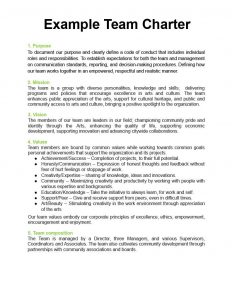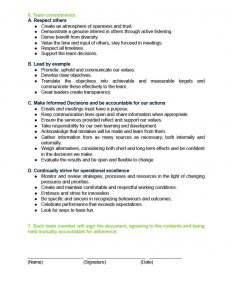Cultural values
To begin, it is important that we understand the term cultural values. By definition, cultural values refer to the beliefs or ideas that a group of people view as important. These beliefs could be upheld by a single organisation, a community, a nation or even an entire hemisphere. A few examples of cultural values at the national level might include largely shared Canadian beliefs such as egalitarianism, multiculturalism and diversity or respect, punctuality and political correctness (English Online Inc., 2016).
Organisational values and team norms/charters/commitments
On a smaller level, for example, within a single organisation, we might see organisational values such as accountability, transparency or integrity. Cultural values play a key role in forming the culture of an organisation, as “culture is the tacit social order of an organisation: It shapes attitudes and behaviours in wide-ranging and durable ways” (Groysberg et al., 2021, para. 6). Strong cultural values in an organisation help support the development and use of individual and organisational soft power.
Organisational leaders who understand the value of organisational culture know that “a courageous culture connects its values to specific behaviours” (Brené Brown Education and Research Group, 2020, para. 4). Many organisations have learned that it is important to take the time to discuss how you are going to work together as a team and develop what you might call team norms – these are the basic ground rules for how team members interact, communicate, share, collaborate and coordinate. When team norms “are properly aligned with personal values, drives, and needs,” they can “unleash tremendous amounts of energy toward a shared purpose and foster an organisation’s capacity to thrive” (Groysberg et al., 2021, para. 6). You can see these within organisations in the form of a team charter. A team charter is essentially an outline created at the beginning of a project, at the formation of a team, or the inception of an organisation. The charter should provide a concise synopsis of the purpose of the team, the values and agreed upon commitments, the goals or objectives, the composition (who is on the team), resources, and constraints. This may also reference a vision and mission statement that everyone on the team stands by (See Figure 3:2).


When you begin a new project or are working with a new group or team, it is important to take the time to clarify your team norms, or ‘how you are going to work together’ early in the project. The team charter document should be referred to throughout the project and is especially useful to reference whenever the team faces difficulties or conflicts. Team commitments come from all team members knowing the expectation of the final outcomes of a specific project, how these fit into the strategic plan of the organisation and ultimately how they are expected to act as a member of the team. Some organisations might even have these displayed on the wall of their building as a friendly reminder where “people know what is expected, encouraged, and rewarded within their team and organisation” (Brené Brown Education and Research Group, 2020, para. 4).
In order for this to work, it is crucial for members of the team to actually ‘walk the walk’ and ‘live their values.’ We reached out to colleagues to share some examples and perspectives on what ‘living your values’ or ‘walking the walk’ looks like in a workplace. Elizabeth Wilkie, currently the Community Services Director with the City of St. Albert, has worked in a variety of capacities and roles in the arts and culture sector in multiple communities and organisations. She wanted to share the following insight:
“Several times I have worked with organisations or teams that have recently faced significant change—teams that had dealt with leadership change, restructuring, loss of key personnel, and loss of core programs. Working to define and redefine how we wanted to work together, our expectations of each other, and what our core values were meant we could focus on forwarding movement. When our energy is spent trying to be heard, trying to understand where we are going, working in opposition of others, and pushing our feelings down, we’re unable to gain the type of agility that allows for creative expression, positive work, and high performance. With a team charter, even the quietest voice in the room has an opportunity to be heard. They can reference how the team agreed to work together and the objectives everyone is striving for.” (Wilkie, Email correspondence, September 2021)
Wilkie’s example provides a perspective on how you might use a values-based approach in assisting team members in moving forward in a more positive, productive and healthier manner.
“I joined a team that felt they had been betrayed by their previous manager. They felt this manager had made promises that were unkept, had offloaded significant work while accepting credit for team accomplishments and did not respect the team. The team was cautious about working with a new supervisor and resistant to sharing concerns, challenges, or opportunities. Working together to review an existing team charter meant we could work together to re-establish and re-commit to how we wanted to work together. Over time, the team charter helped ease colleagues in (and out) of difficult conversations. It became a valued map to help guide the right choices for each other and a reference to reassure ourselves we were heading in the right direction – together” (Wilkie, Email correspondence, September 2021).
Having a clear understanding of your organisation’s culture can also help “determine cultural fit during hiring” and offers “very straightforward standards of behaviour when there are non-performance-related issues” (Brené Brown Education and Research Group, 2020, para. 4). The phrase ‘go slow to go fast’ is key here. It might be a little frustrating to those of you who want to jump in and get things moving, but trust me, if you take a little time at the front of a project to clarify how you are going to work together, it will substantially reduce misunderstandings and confusion and potential difficult conversations later on.
